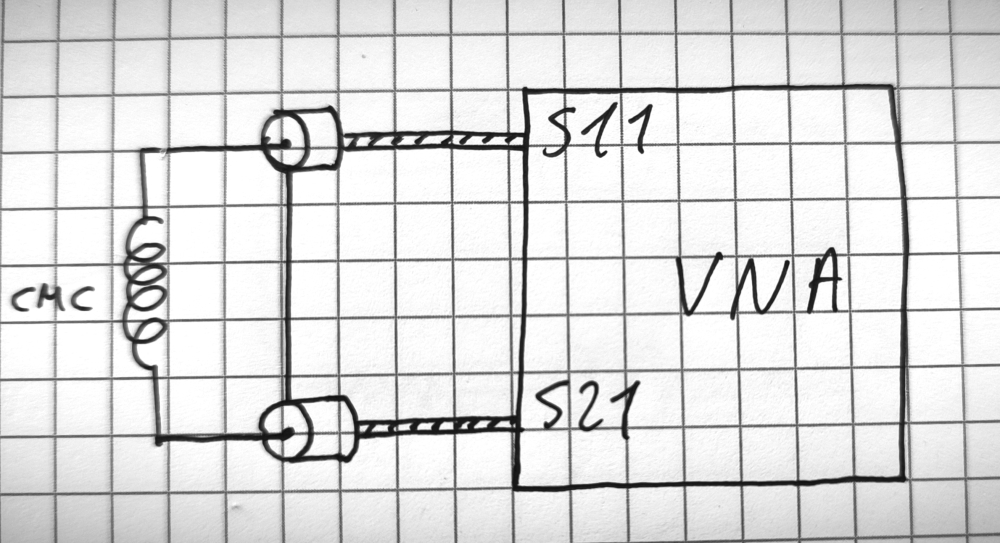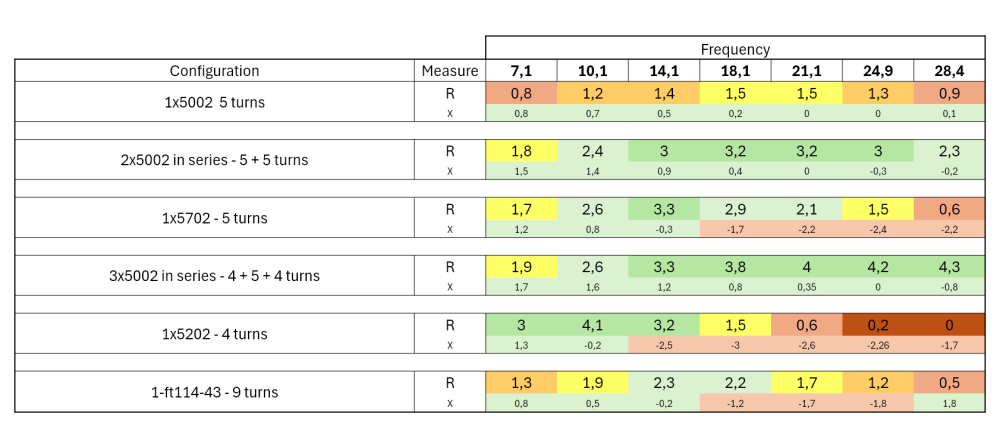Building a Common-Mode Choke for 7-30 MHz
I’ve encountered persistent RF interference issues with my EFHW and ¼-wave antennas on several SOTA activations. The interference led to distorted audio, a particularly concerning issue given the sensitivity of the TX-500 radio lab 599 to RF. Reports of audio chip failures due to RF ingress motivated me to tackle the problem seriously. My goal was to design a lightweight and efficient common-mode choke capable of operating from 7 to 30 MHz.
Initial Attempts: Bifilar Chokes on FT114-43 Toroids
My first approach involved bifilar windings on FT114-43 toroidal ferrite cores. While these chokes provided good common-mode rejection, they failed to maintain an impedance close to 50 Ω, especially on higher frequencies above 20 MHz (vSWR 1.5).
Research and Material Selection
After consulting forums and conducting personal research, I decided to switch to round cable cores made from mix 43 ferrite. I sourced the following cores from Fair-rite: 2643625202 2643801202 2643625102 2643665702 2643625002. I used RG316 coax cable.

Measurement and Testing
For my measurements, I used a vector network analyzer (VNA) to assess the resistance (R) and reactance (jX) of approximately 20 different configurations. The setup for the S21 series measurement consisted of the following:
- Short coaxial cables from the VNA ports to BNC connectors, with their shields connected
- The RG316 coaxial cable lengths between the common-mode choke (CMC) and the BNC center conductors were kept as short as possible
- Measurements were performed on the shield of that RG316 coax

Below is an overview of my findings:

Optimal Configuration
The best results were obtained using three 2643625002 cores in series. The winding configuration was as follows:
- 4 turns on the first core
- 5 turns on the second core
- 4 turns on the third core
This setup provided high resistance across the entire 7-30 MHz band while maintaining predominantly inductive reactance. The series configuration reduced turn-to-turn capacitance, minimizing unwanted capacitive reactance that could degrade performance at higher frequencies.
Design Insights
-
Impact of Core Geometry:
- Long cores like the 2643625202 are more prone to capacitive effects due to increased turn interaction. Shorter cores with a larger diameter, like the 2643625002, offered better results by reducing these interactions.
-
Multi-Core :
- Using multiple cores in series broadens the operational bandwidth, as each core contributes to the overall choking impedance. However, based on my experience with stacked cores (not shown here), they can behave similarly to long cores, resulting in a high resistance on a narrow range and increased reactive capacitance.
-
Winding Configuration:
- The number of turns on each core directly affects both resistance and reactance. A balanced distribution of turns, as used in the optimal configuration, ensures a good compromise between choking impedance and bandwidth.
Conclusion
Building an efficient common-mode choke requires careful selection of materials, core geometry, and winding configuration. The use of mix 43 round cable cores in series proved to be a practical solution for covering the 7-30 MHz range. By combining measurements and iterative testing, I achieved a design that provides stable performance across the HF band, protecting my TX-500 from RF ingress and improving overall audio quality.
Here is the final product, equipped with BNC male and female connectors, allowing flexibility to place the choke either at the radio end (for EFHW antennas) or at the antenna end (for 1/4 wave antennas) of the main coaxial cable.

This project highlights the importance of matching the choke design to the specific requirements of your setup. For those facing similar issues, I recommend experimenting with different cores and configurations while leveraging tools like a VNA to fine-tune your design.



